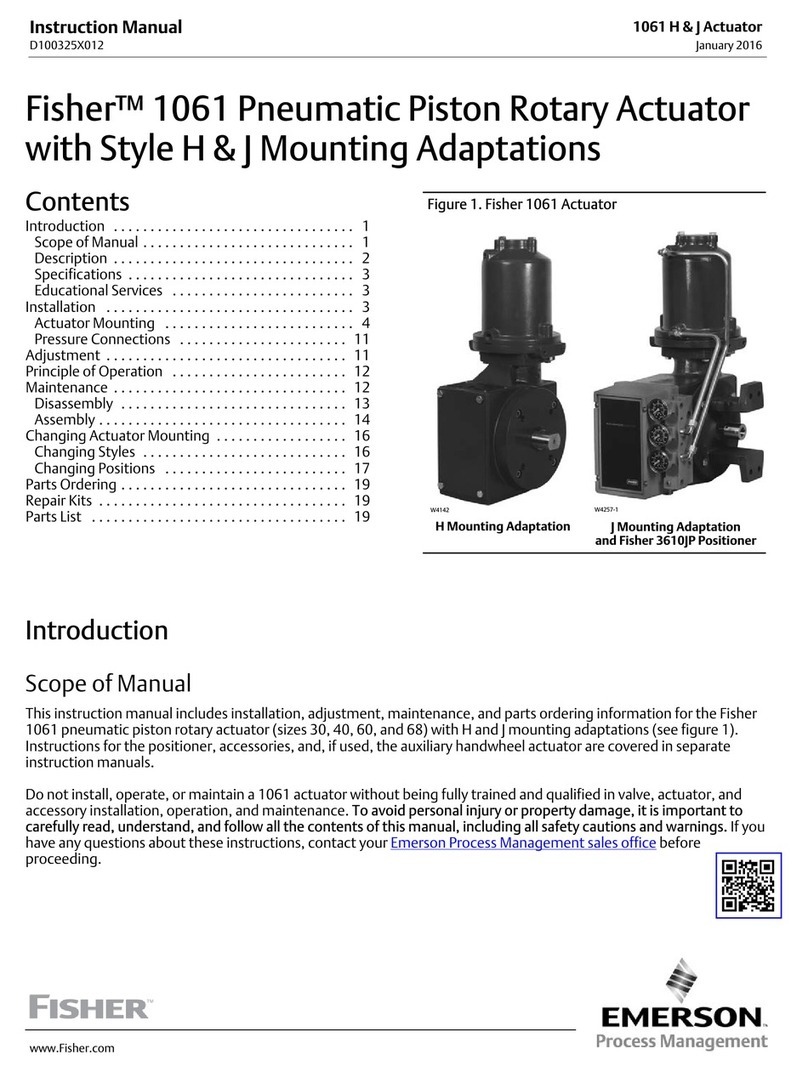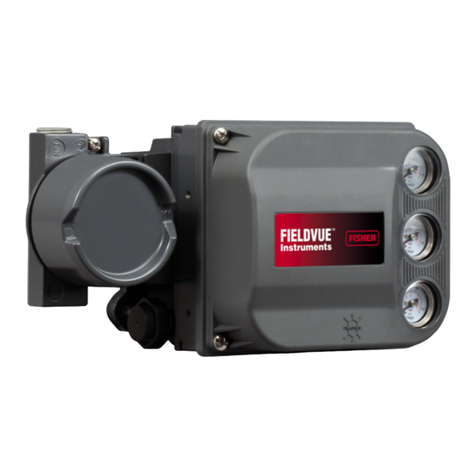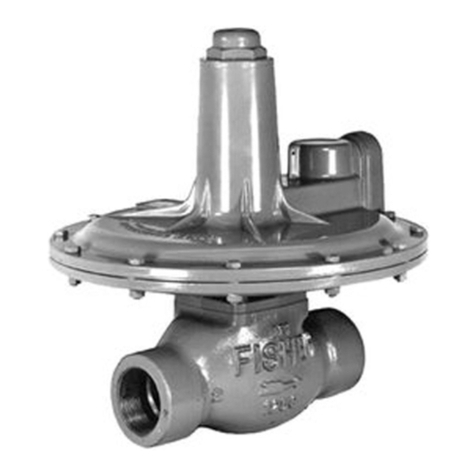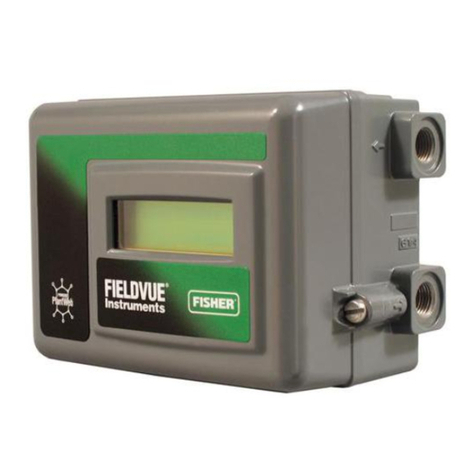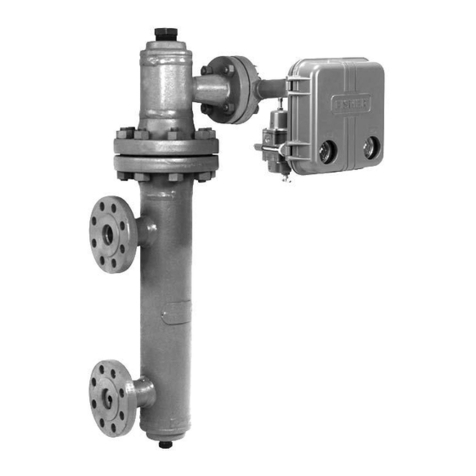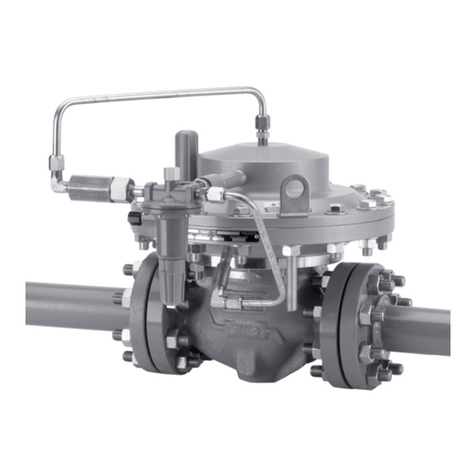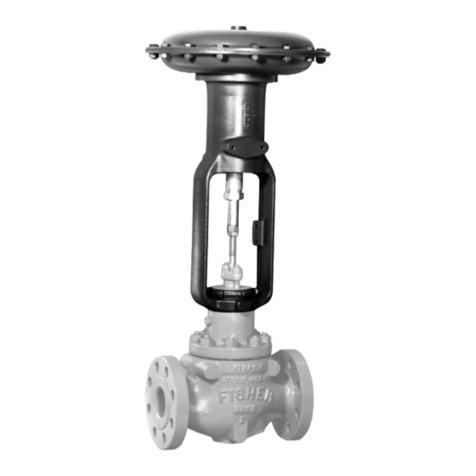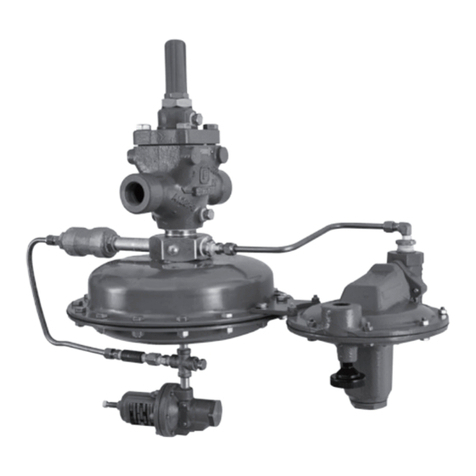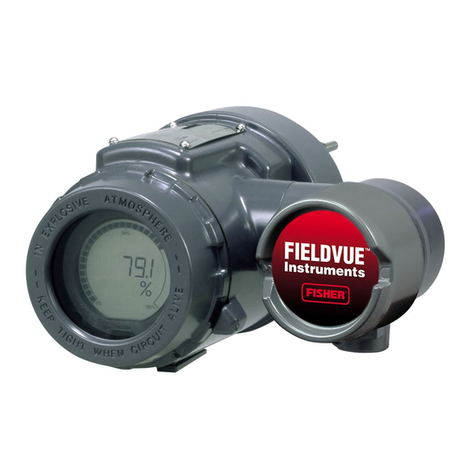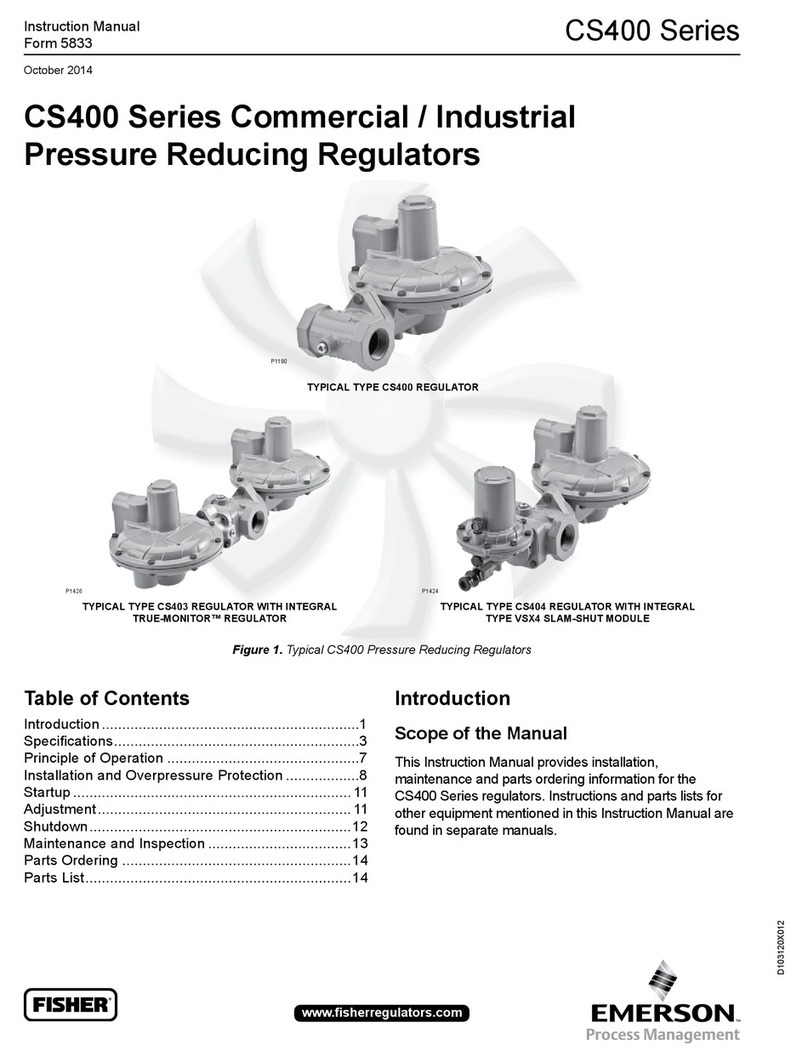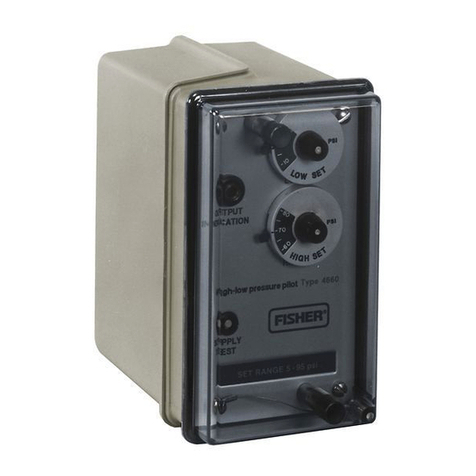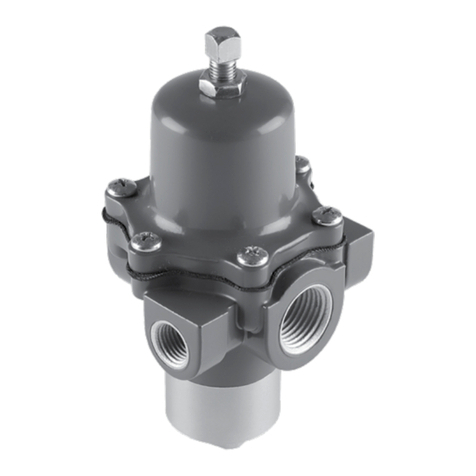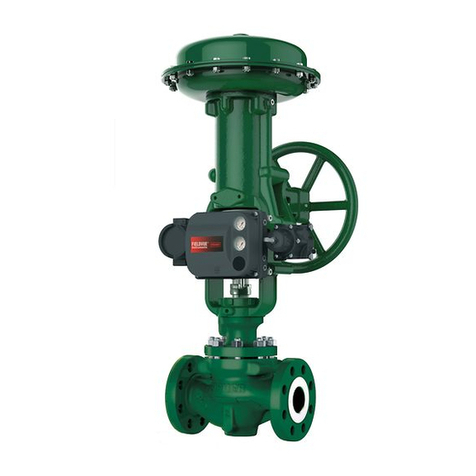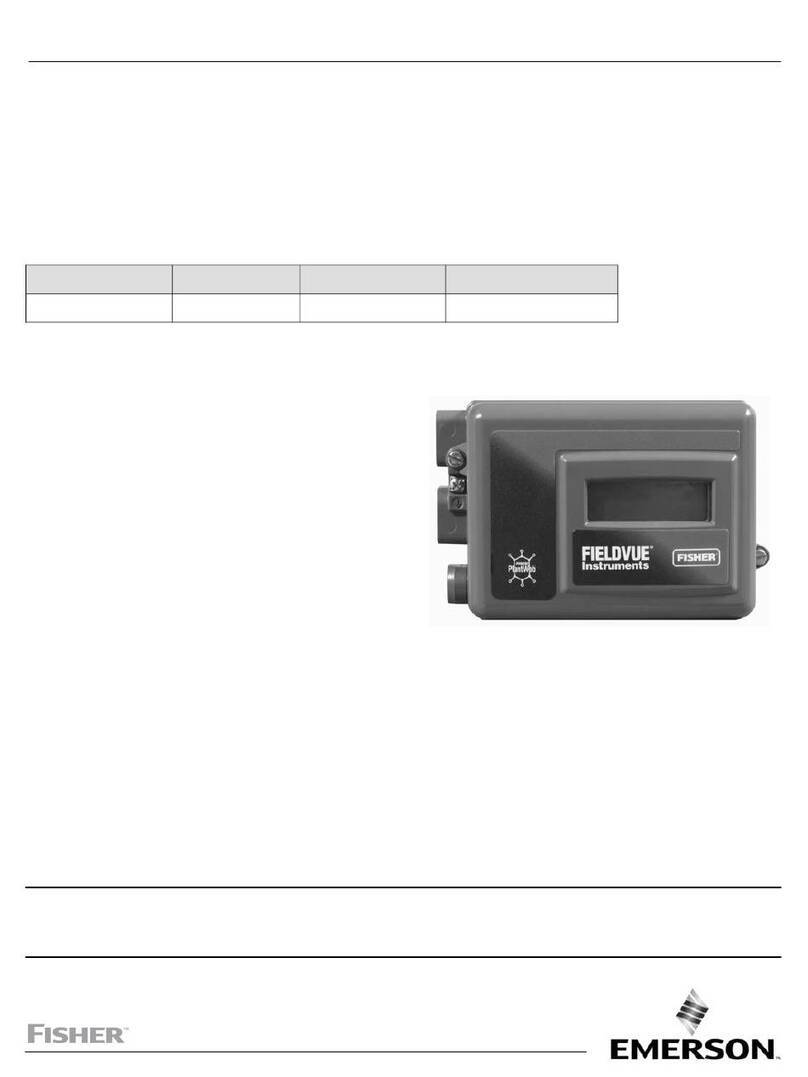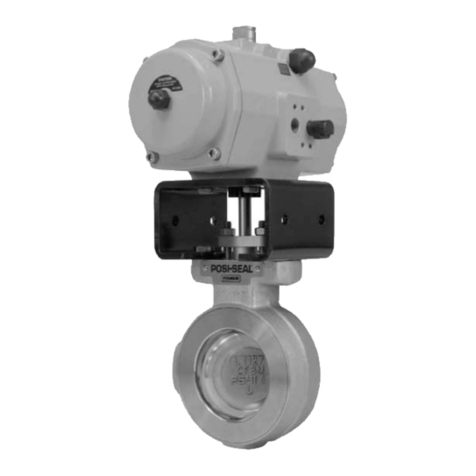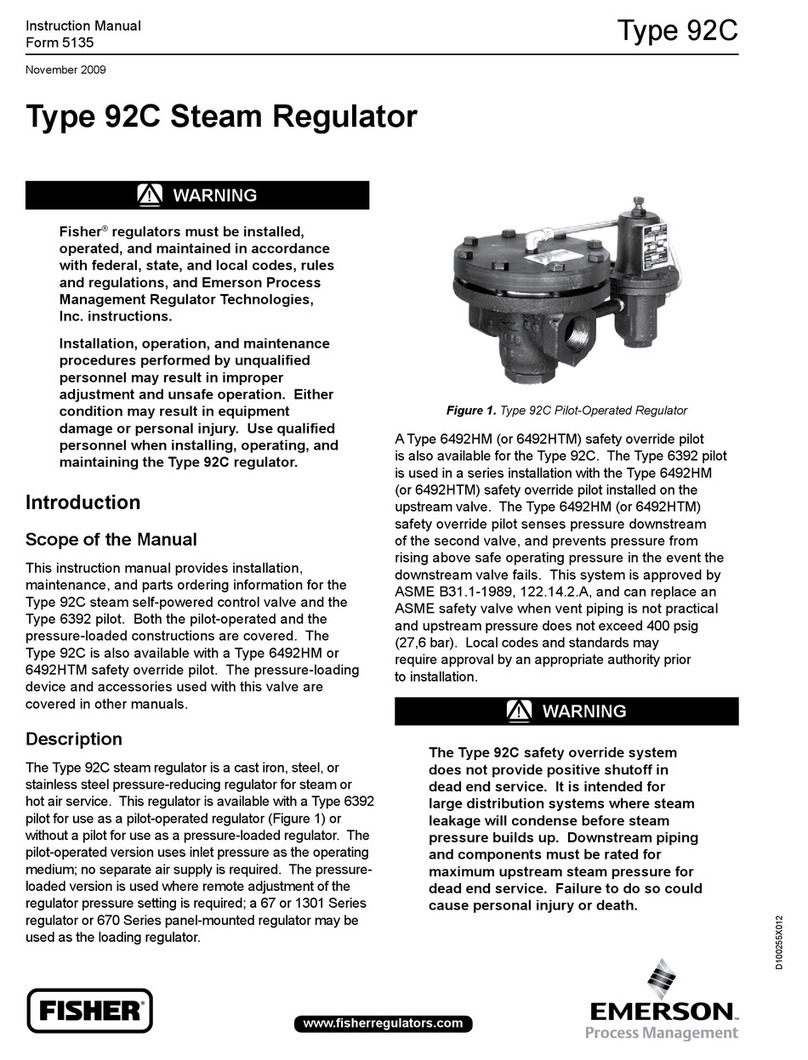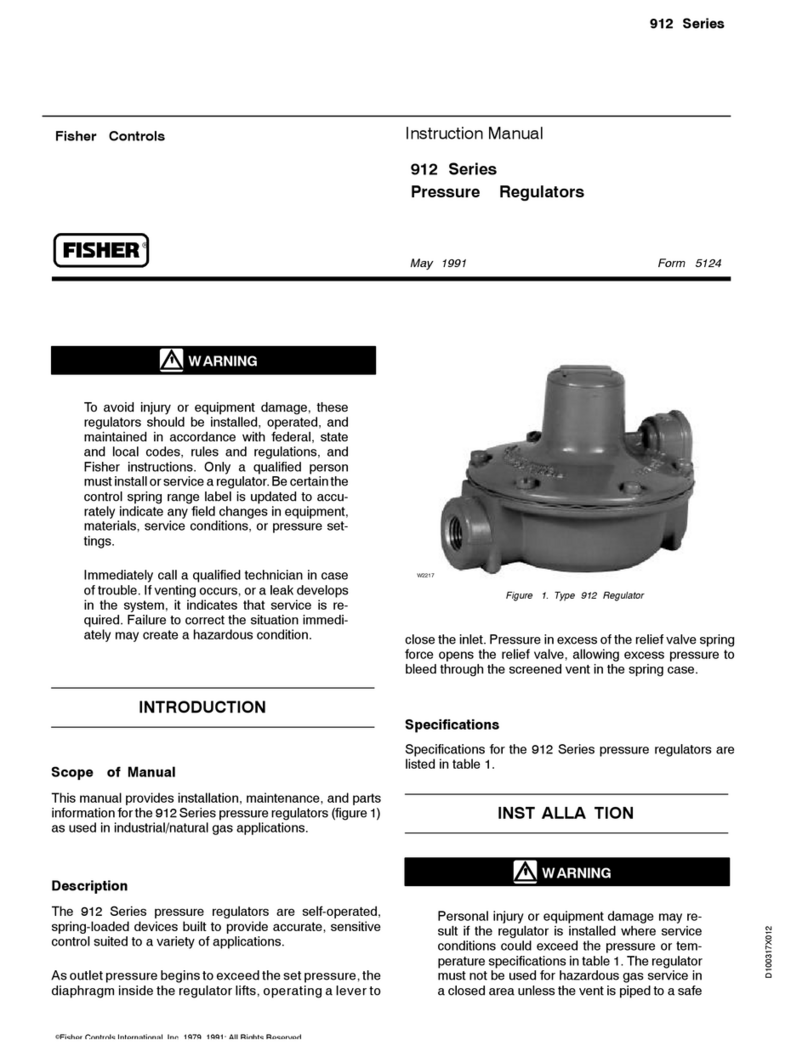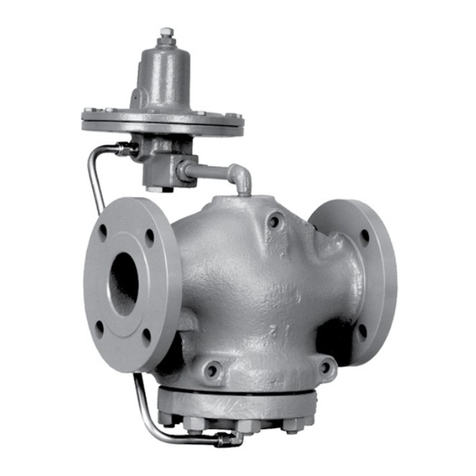
Type 1032
9
CAUTION
To avoid damage to the safety key (key
5), do not stretch or kink it.
4. Make certain O-ring (key 26) is installed and lo-
cated next to the nut on the safety key (key 5). Hold
the safety key to prevent kinking it, and insert the end
of the safety key into the actuator and into the groove
of the end cap (key 4). Gently push the safety key
around its groove in the end cap. Turning the end cap
away from the safety key while keeping the end cap
against the body will assist in installing the safety key.
For larger models, use a wrench on the end cap boss
to assist in turning the end cap.
5. Screw the threads of the safety key into the actua-
tor and tighten the nut.
Installing the End Caps on Spring-Return
Actuators
Assemble and install the end caps as described be-
low. The actuator has two end caps. Perform these
same steps on both end caps. Key numbers refer-
enced in the following steps are shown in figure 11.
1. Apply a lithium-based grease to the end of the
body bore and to the surface of the end cap (key 4)
that fits into the body bore. Make certain the grease
gets into the grooves of the end cap.
2. Apply a light coat of lithium-based grease to the
end cap O-ring (key 13), and then install it in its
groove of the end cap (key 4). The O-ring groove is
the groove adjacent to the flange on the end cap.
3. Refer to figure 6. If the nut adjacent to to end cap
was not changed or adjusted since the end cap was
removed, there should still be sufficient spring com-
pression on the spring(s) to assemble the end cap to
the actuator body. If the spring compression is not suf-
ficient to allow end cap installation, tighten the nut ad-
jacent the end cap to apply more spring compression
until the end cap can be assembled to the actuator
body.
4. Insert the end cap (key 4) into the body bore while
making certain that the retractor spring seat fits into
the recess in the top of the piston (see figure 6).
CAUTION
To avoid damage to the safety key (key
5), do not stretch or kink it
5. Make certain O-ring (key 26) is installed and lo-
cated next to the nut on the safety key (key 5). Hold
the safety key to prevent kinking it, and insert the end
of the safety key into the actuator and into the groove
of the end cap (key 4). Gently push the safety key
around its groove in the end cap. Turning the end cap
away from the safety key while keeping the end cap
against the body will assist in installing the safety key.
For larger models, use a wrench on the end cap boss
to assist in turning the end cap.
6. Screw the threaded end of the safety key into the
actuator and tighten the nut.
7. When both end caps have been installed on the
actuator, refer to figure 6, and remove the retractor
rods as follows:
a. Place a wrench on the locking nuts located on
the end of the retractor rod. This will keep the re-
tractor rod from turning when performing step b.
b. Loosen the nut adjacent to the end cap in order
to release the spring compression. Turn this nut
away from the end cap to make certain spring com-
pression is released by the retractor rod.
c. Turn the locking nuts on the end of the retractor
rod and unscrew the retractor rod from the retractor
spring seat. Remove the retractor rod from the end
cap.
d. Install the sealing washer (key 22) and the cap
screw (key 21) in the end cap (key 4). Tighten the
cap screw.
Changing Springs
Spring-return actuators may be changed from one
spring pressure rating to another. The spring pressure
is the combined pressure of all the springs used in the
actuator end caps.
For example: For an 80 psi spring combination, there
is a 25 psi spring and a 15 psi spring in each end cap
of the actuator. To change from an 80 psi spring com-
bination to a 65 psi, remove one 15 psi spring from
one end cap. Then, re-assemble the end cap, replace
it on the actuator and the combined spring pressure
setting is 65 psi. Perform the procedures listed below
to remove the springs.
Refer to figure 6 for an illustration of an end cap as-
sembly with the retractor rod installed. Key numbers
referenced in the following steps are shown in figure
11. Observe the warning at the start of the Mainte-
nance section.
1. Isolate the control valve from the line pressure, re-
lease pressure from both sides of the valve body, and
drain the process media from both sides of the valve.
If using a power actuator, also shut-off all pressure

